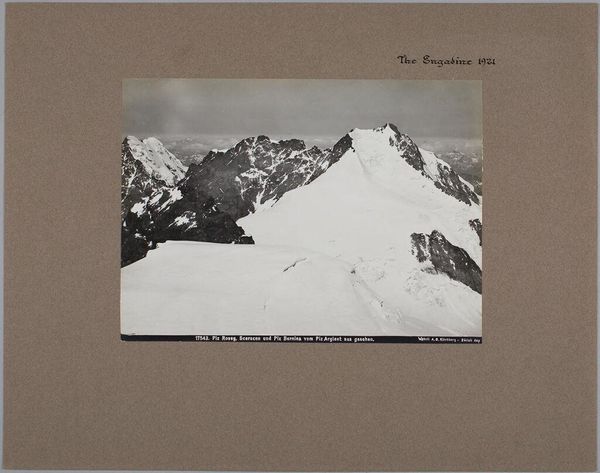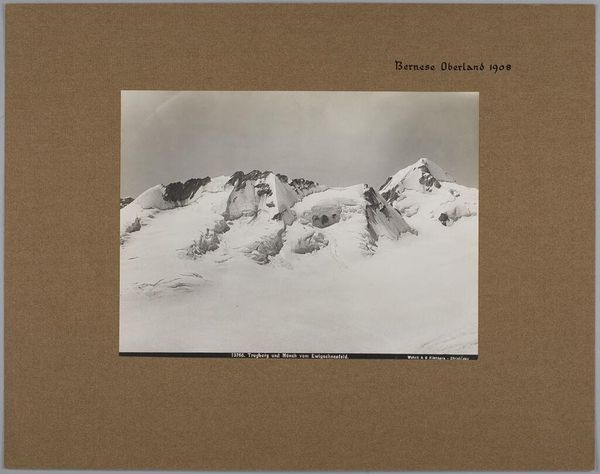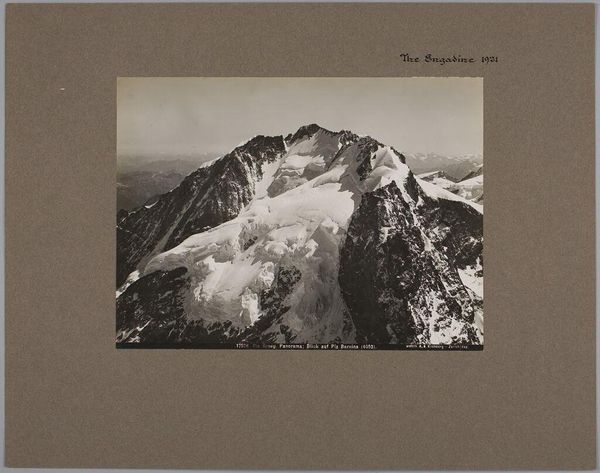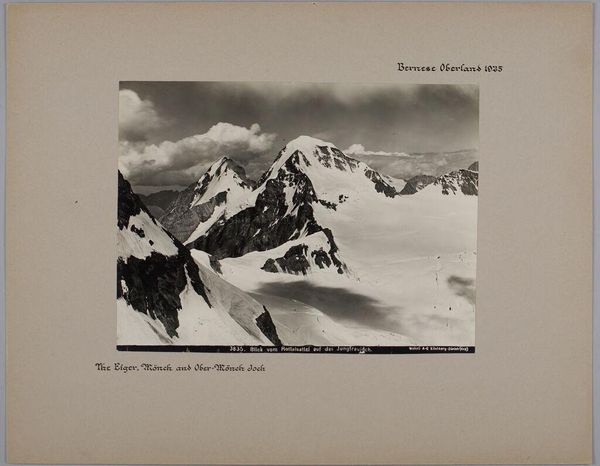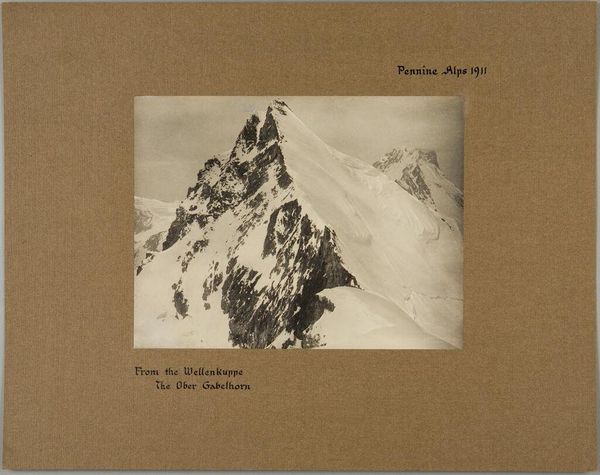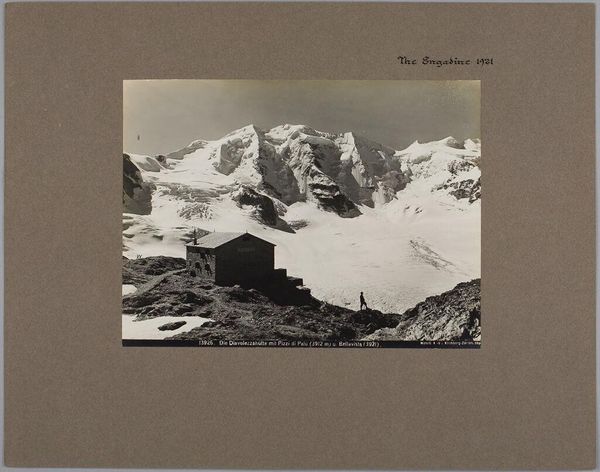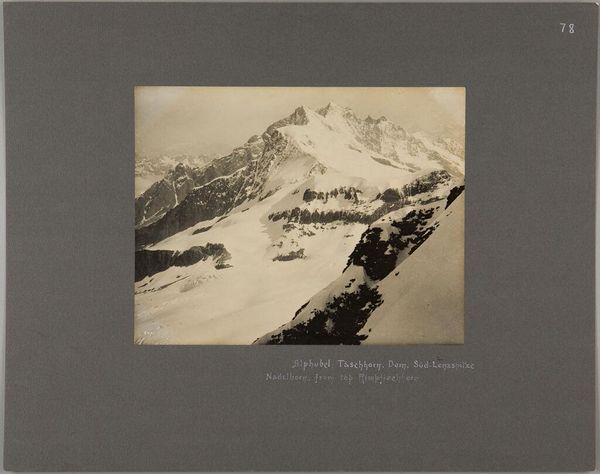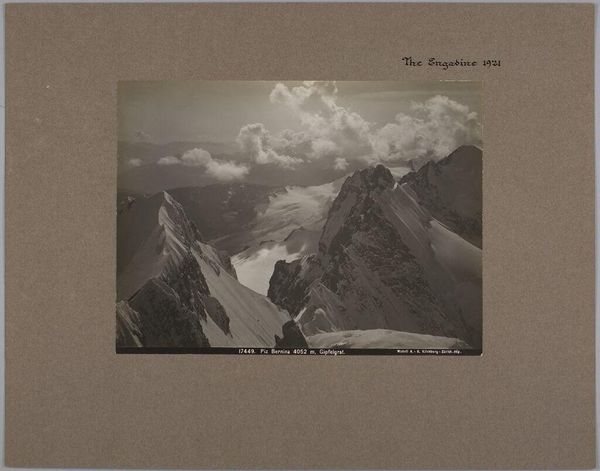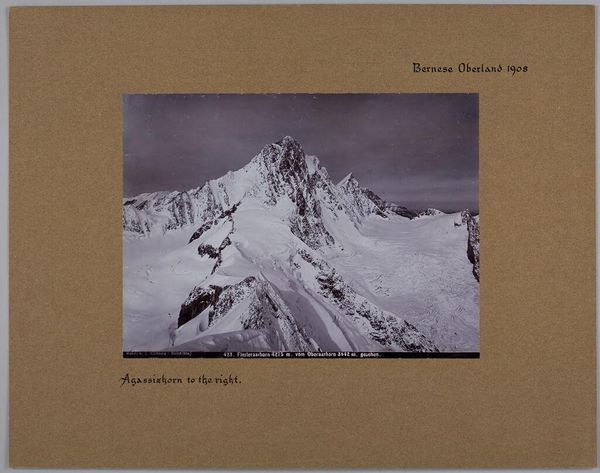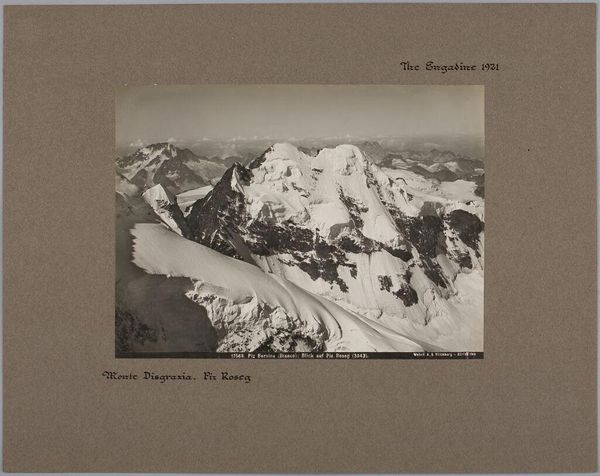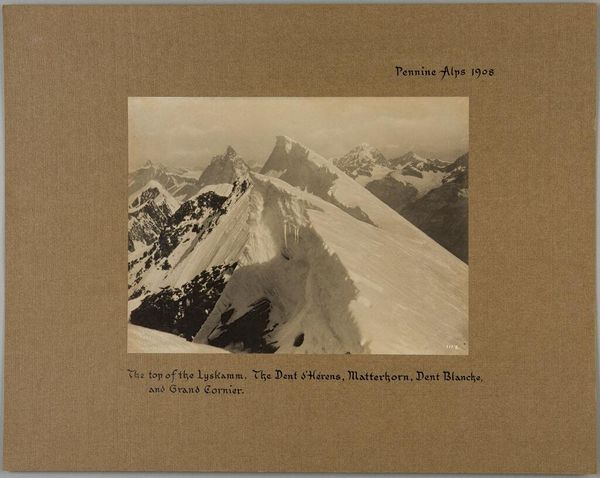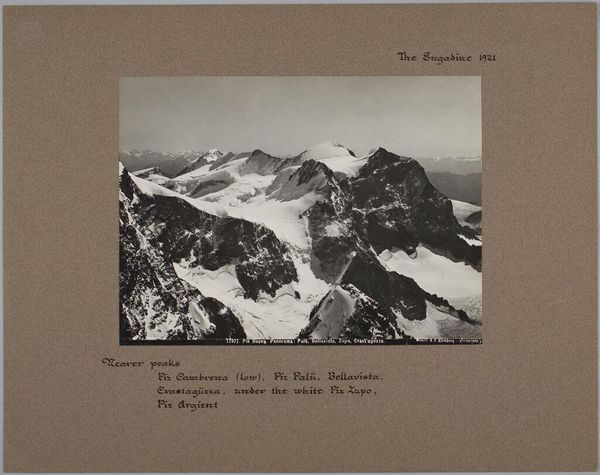
Der Piz Bernina (4052) von der Crast'agüzza aus gesehen, The Engadine 1921
0:00
0:00
Dimensions: image: 16 x 22 cm (6 5/16 x 8 11/16 in.) sheet: 16.4 x 22 cm (6 7/16 x 8 11/16 in.) mount: 27.9 x 35.4 cm (11 x 13 15/16 in.)
Copyright: CC0 1.0
Editor: Here we have A. G. Wehrli's photograph, "Der Piz Bernina (4052) von der Crast'agüzza aus gesehen, The Engadine." It's a striking image, almost monumental in its stillness. What role do you think photography played in shaping perceptions of nature during this period? Curator: That's an excellent question. Early photography, particularly of landscapes, served to document and promote specific narratives about nature - often linked to national identity or colonial expansion. How might this image, with its focus on a specific peak, reflect those wider cultural currents? Editor: Perhaps it's about conquering or taming nature, presenting it as something grand but also accessible. Curator: Exactly. The act of photographing and then viewing such images brought a sense of ownership, turning remote landscapes into consumable commodities. Consider how this imagery may have influenced the development of tourism and recreation in mountainous regions. Editor: I never thought about landscape photography in such a socio-political way. It’s fascinating to consider its impact. Curator: Indeed. Art serves not only as an aesthetic object but as a mirror reflecting societal values and historical contexts.
Comments
No comments
Be the first to comment and join the conversation on the ultimate creative platform.
